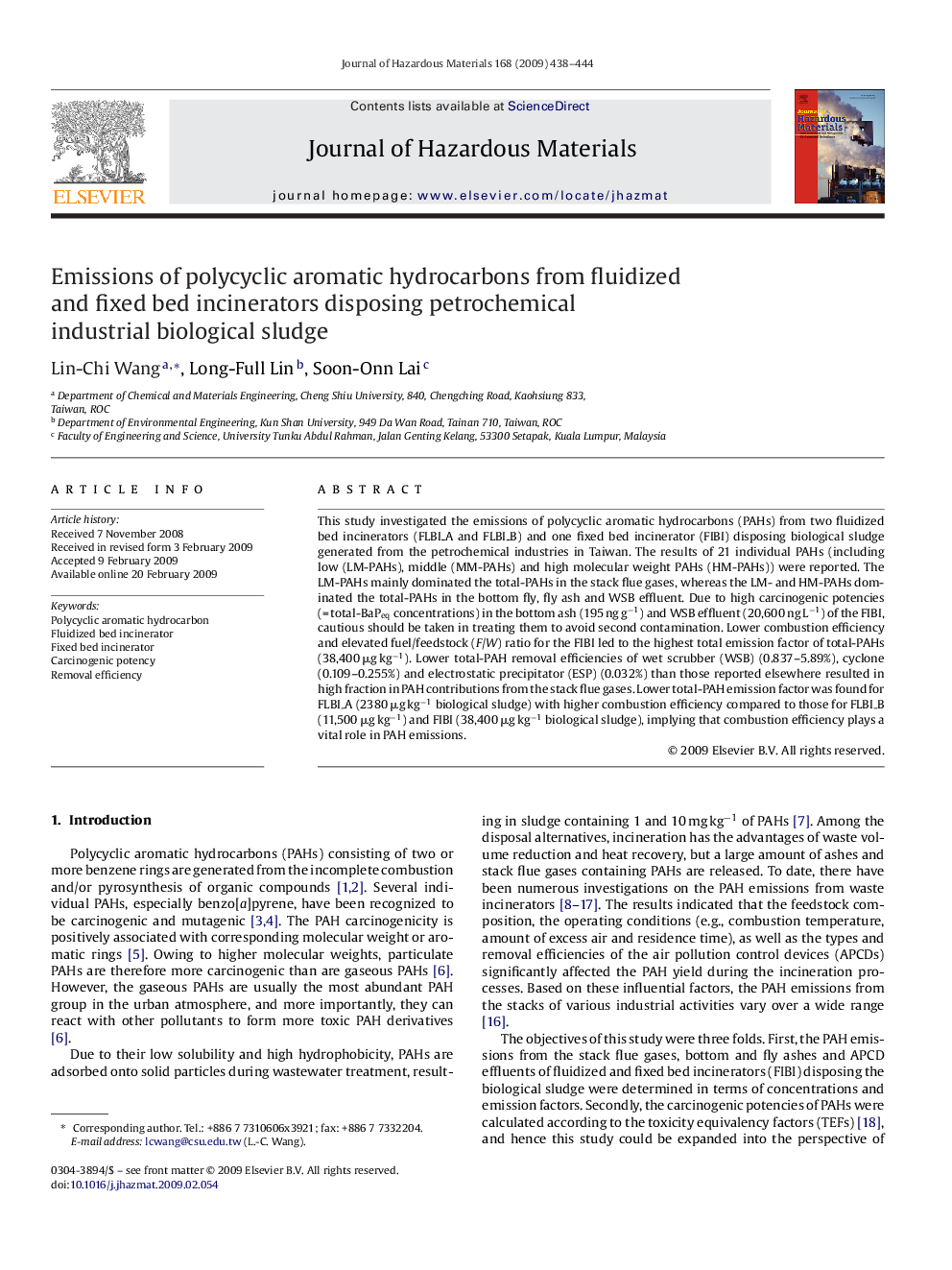| Article ID | Journal | Published Year | Pages | File Type |
|---|---|---|---|---|
| 581362 | Journal of Hazardous Materials | 2009 | 7 Pages |
Abstract
This study investigated the emissions of polycyclic aromatic hydrocarbons (PAHs) from two fluidized bed incinerators (FLBI_A and FLBI_B) and one fixed bed incinerator (FIBI) disposing biological sludge generated from the petrochemical industries in Taiwan. The results of 21 individual PAHs (including low (LM-PAHs), middle (MM-PAHs) and high molecular weight PAHs (HM-PAHs)) were reported. The LM-PAHs mainly dominated the total-PAHs in the stack flue gases, whereas the LM- and HM-PAHs dominated the total-PAHs in the bottom fly, fly ash and WSB effluent. Due to high carcinogenic potencies (= total-BaPeq concentrations) in the bottom ash (195 ng gâ1) and WSB effluent (20,600 ng Lâ1) of the FIBI, cautious should be taken in treating them to avoid second contamination. Lower combustion efficiency and elevated fuel/feedstock (F/W) ratio for the FIBI led to the highest total emission factor of total-PAHs (38,400 μg kgâ1). Lower total-PAH removal efficiencies of wet scrubber (WSB) (0.837-5.89%), cyclone (0.109-0.255%) and electrostatic precipitator (ESP) (0.032%) than those reported elsewhere resulted in high fraction in PAH contributions from the stack flue gases. Lower total-PAH emission factor was found for FLBI_A (2380 μg kgâ1 biological sludge) with higher combustion efficiency compared to those for FLBI_B (11,500 μg kgâ1) and FIBI (38,400 μg kgâ1 biological sludge), implying that combustion efficiency plays a vital role in PAH emissions.
Related Topics
Physical Sciences and Engineering
Chemical Engineering
Chemical Health and Safety
Authors
Lin-Chi Wang, Long-Full Lin, Soon-Onn Lai,
